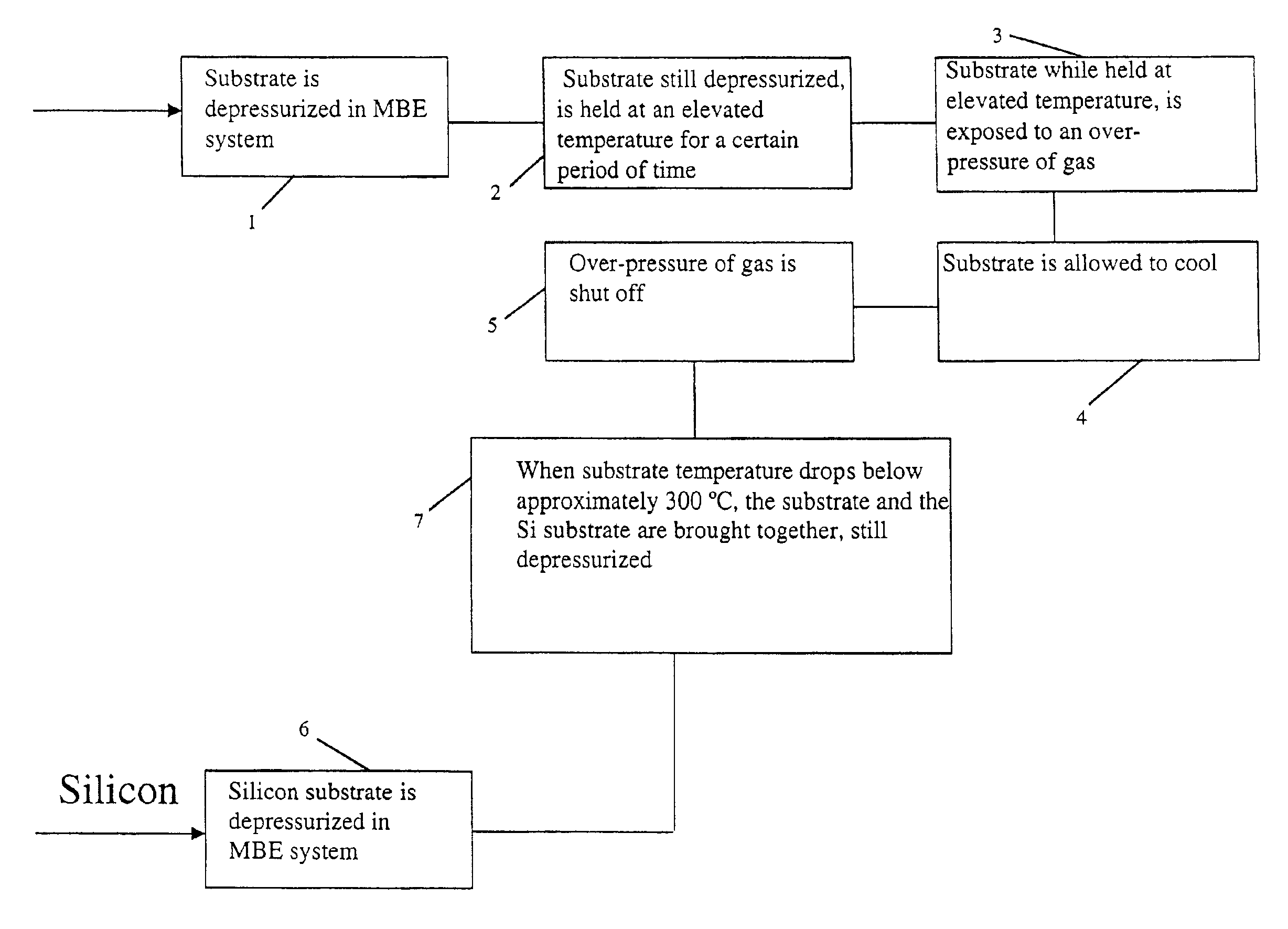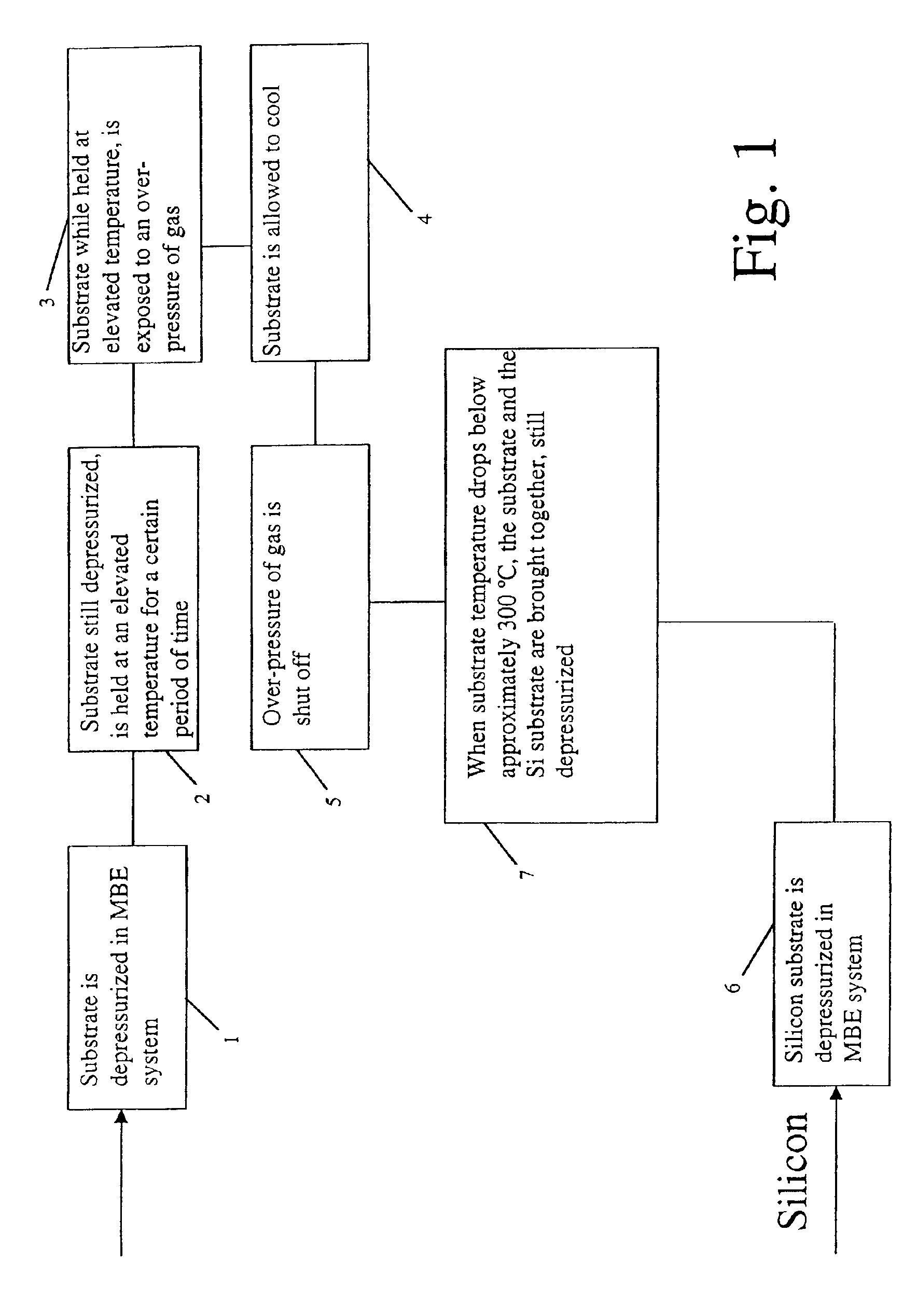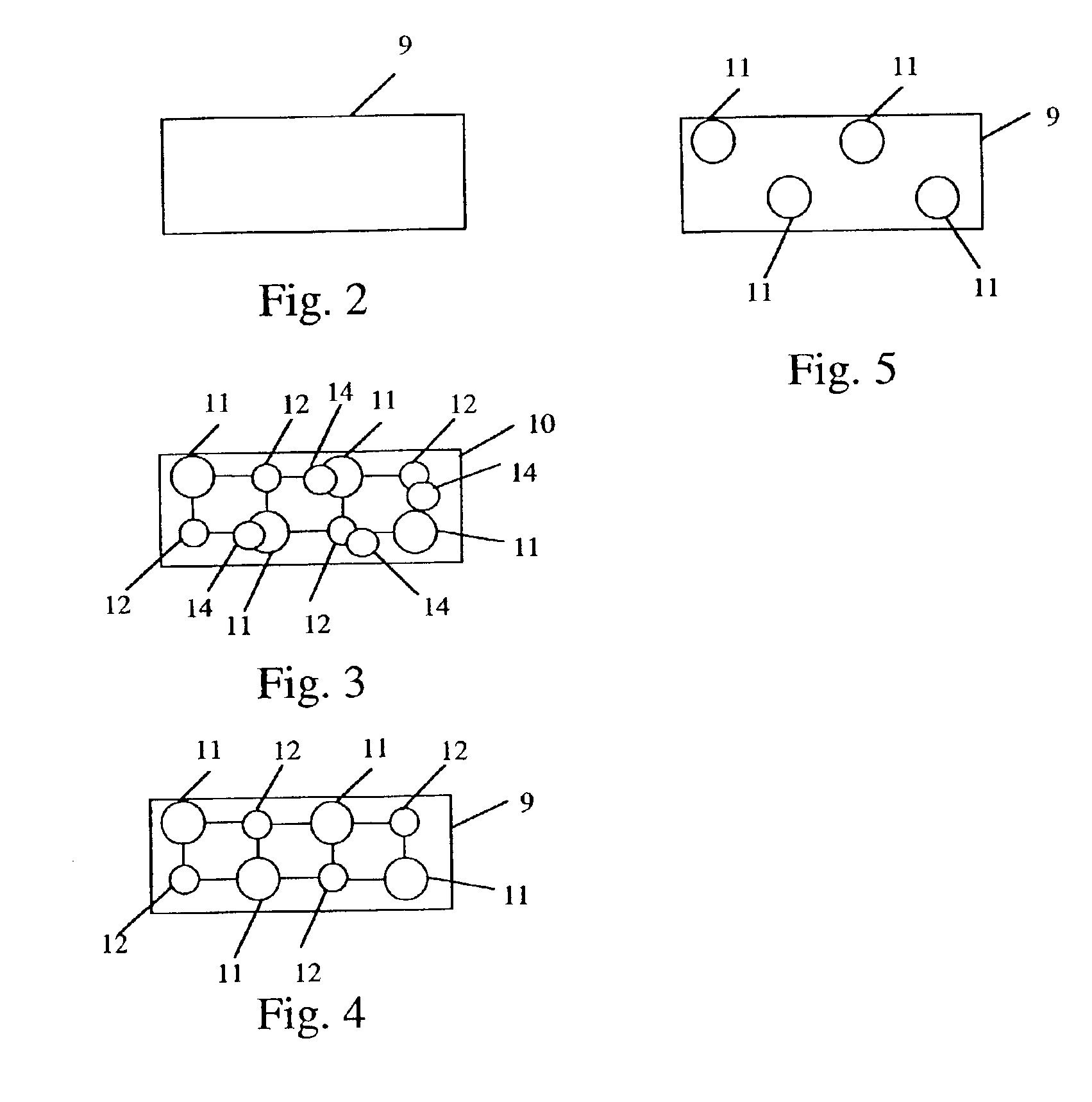Method of improving a surface of a substrate for bonding
- Summary
- Abstract
- Description
- Claims
- Application Information
AI Technical Summary
Benefits of technology
Problems solved by technology
Method used
Image
Examples
first embodiment
Shown in blocks 1-7 of FIG. 1 is a generalized block diagram of the method according to the present invention. A first embodiment of the present invention is described with reference to an InP substrate 9 shown in FIG. 2. The InP substrate 9 is preferably epitaxially grown, however if the InP substrate is not epitaxially grown, an InP layer may be epitaxially grown on the InP substrate to provide an epitaxially grown layer for bonding purposes.
Shown in FIG. 3 is the surface 10 of the InP substrate 9. The surface 10 contains In atoms 11 and P atoms 12. The surface also contains oxide 14, which is undesirable for bonding. The InP substrate 9 is depressurized in a MBE system where the pressure is preferably no greater than 3×10−6 pa (see block 1, FIG. 1). The InP substrate 9 is heated in the depressurized MBE system until the temperature is in the range of 500° C.-535° C., preferably about 515° C. (see block 2 of FIG. 2). Once the temperature is about 515° C. or within several degrees,...
second embodiment
In a second embodiment, different substrates and gases can be used. Furthermore, the temperature at which the gas over-pressure is shut off can be adjusted to determine whether atoms from the gas over-pressure remain on the surface of the substrate. For example, an arsenic (As2) over-pressure can be used with a substrate containing arsenic (such as InAs, GaAs, AlAs, InGaAs, InAlAs, InGaAlAs) in lieu of the P2 gas described in the first embodiment. The same practice can be applied to a substrate containing antimony (such as AlSb, AlGaSb) by utilizing an Sb2 overpressure in lieu of the P2 gas described in the first embodiment.
An example of using an As2 over-pressure is described with reference to blocks 1-5 of FIG. 1, the InP substrate 9 discussed in the first embodiment, and FIGS. 6-9, to create a bond between the InP substrate 9 described in the first embodiment and an InAs substrate 15 shown in FIG. 6. Using the aforementioned technique described with reference to blocks 1-5 of FIG...
PUM
 Login to view more
Login to view more Abstract
Description
Claims
Application Information
 Login to view more
Login to view more - R&D Engineer
- R&D Manager
- IP Professional
- Industry Leading Data Capabilities
- Powerful AI technology
- Patent DNA Extraction
Browse by: Latest US Patents, China's latest patents, Technical Efficacy Thesaurus, Application Domain, Technology Topic.
© 2024 PatSnap. All rights reserved.Legal|Privacy policy|Modern Slavery Act Transparency Statement|Sitemap



